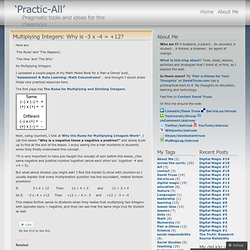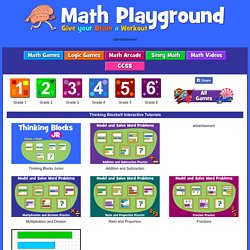

N - Adding and Subtracting Fractions. N - Add & Subtract Fractions Explained. Adding/Subtracting and an Intro to Multiplying/Dividing Fractions A colleague and good friend, Dave Burke, reached out to me recently for some ideas around adding and subtracting fractions.

In particular, he was interested in trying to make the topic a little more enjoyable by adding some context. This was a challenge I was really eager to work on because working with fractions is such a sore spot for so many students and their teachers. In the past, I tried to help make dividing fractions less abstract by using the idea of dividing chocolate bars. With this in mind, I figured using chocolate bars for adding and subtracting would be a good starting point to move towards multiplication and division later. Here are some expectations from the Grade 7 Ontario math curriculum that we’ll be aiming to touch on: I was surprised when I reviewed the grade 7 curriculum to find that the idea of dividing whole numbers by simple fractions was listed before adding and subtracting fractions. N - Are 1 and 0 prime or composite numbers? N - Basic Number Properties. Purplemath There are three basic properties of numbers, and your textbook will probably have just a little section on these properties, somewhere near the beginning of the course, and then you'll probably never see them again (until the beginning of the next course).

My impression is that covering these properties is a holdover from the "New Math" fiasco of the 1960s. While the topic will start to become relevant in matrix algebra and calculus (and become amazingly important in advanced math, a couple years after calculus), they really don't matter a whole lot now. MathHelp.com Why not? Distributive Property The Distributive Property is easy to remember, if you recall that "multiplication distributes over addition". Why is the following true? Since they distributed through the parentheses, this is true by the Distributive Property. Use the Distributive Property to rearrange: 4x – 8 The Distributive Property either takes something through a parentheses or else factors something out. 4 × 3 × x. N - Fractions in Carpentry.
N - Fractions with Lego. N - Fractions, Ratios, Rates, and Percents Explained. What's the difference between a fraction and a ratio?

A fraction is a number that names part of a whole or part of a group. The denominator represents the total number of equal parts the whole is divided into. A ratio is a comparison of two quantities. For example, in a group of five students in which there are 4 boys and 1 girl, the fraction of the group that is female is . The fraction of the group that is male is . N - Fractions Rap. N - Reason for Learning Factoring. N - Integers - reason why two negatives make a positive. Here are ‘The Rules’ and ‘The Reasons’, ‘The How’ and ‘The Why’ for Multiplying Integers.

I uploaded a couple pages of my Math Model Book for a ‘Pair-a-Dimes’ post, “Assessment & Rote Learning: Math Conundrums“… and thought I would share these very practical resources here. The first page has The Rules for Multiplying and Dividing Integers. Next, using counters, I look at Why the Rules for Multiplying Integers Work*. *It is very important to have pre-taught the concept of zero before this lesson, (the same negative and positive number together cancel each other out: together -4 and +4 = 0). But what about division you might ask? If 3 x 4 = 12 Then 12 ÷ 4 = 3 and 12 ÷ 3 = 4 So if, -3 x -4 = +12 Then +12 ÷ – 4 = -3 and +12 ÷ -3 = -4 This makes further sense to students when they realize that multiplying two integers with opposite signs = negative, and they can see that the same rings true for division as well. Like this: Like Loading... Sorry, the comment form is closed at this time.
N - Order of Operations Quiz. N - Proportions. N - Rate, Ratio, and Proportion. N - Rate vs. Ratio. N - Ratio Problem Solving. N - Scientific Notation. N - Square and Round Plugs. N - Thinking Blocks. Grade 1 Grade 2 Grade 3 Grade 4 Grade 5 Grade 6 Thinking Blocks® Interactive Tutorials advertisement Thinking Blocks Junior.

StudyJams. Virtual Nerd.